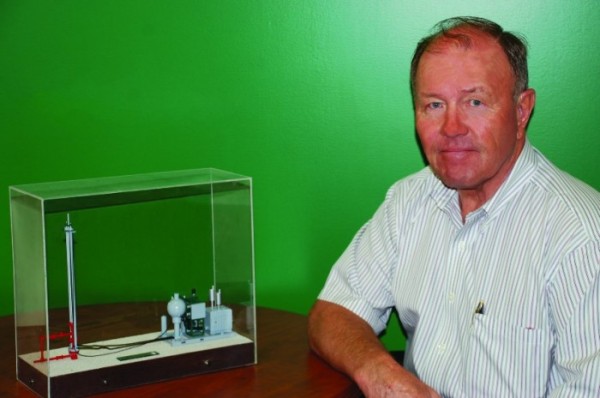
| Date Published | September 26, 2013 |
| Company | Ecoquip Pump Jacks |
| Article Author | Markham Hislop |
| Article Type | June 2013 Issue |
| Category | Articles |
| Tags | Oilfield HUB Member, Pump Jacks |
| HUB SEARCH | Ecoquip |
Meet Les Grabill, inventor of the proverbial better mousetrap. Or, in his case, a hydraulic pump jack that actually works.
History is replete with inventors who never perfected a technology. How many tried to create a working incandescent bulb before Thomas Edison succeeded? Or the telephone before Alexander Graham Bell? The answer is, a lot.
The same is true of hydraulic pump jacks. Grabill says the first hydraulic pump jacks used in the oilfield date back to the early 1950s.
They were without exception, failures. Producers were happy to try a new technology, and they may have worked for a little while, but eventually they broke; sometimes they broke catastrophically, which meant the oil patch quickly soured on them.
Production engineers and small oil companies will try something once if they think it will save money or increase production – preferably both – but once that new widget has proven to be a dud, getting them to try it again is a tough sell.
Les Grabill is a determined guy, and when he was laid off in 1992 after 28 years with an Alberta rock bit company, he crossed paths with a couple of inventors who thought they had fixed the early problems with the hydraulic pump jack. Grabill had started his own business selling used oilfield equipment. The inventors asked him to take their new product to market. He sold a couple of the units, but they proved to be a “dismal failure.â€
But Grabill could see the potential. All those years in the oil patch had taught him to recognize technology that solves a problem when he saw it.
“It was intriguing because it was one of the few parts of the oilfield industry that had no new technology in the previous 40 or 50 years,†he said. With a few design tweaks, Grabill thought the hydraulic pump jacks could be made to work. So he set out to do just that.
It took a couple of years. Grabill and his partner didn’t rush development. They knew it was better to get the product right the first time, rather than ask producers to buy poorly designed and built equipment.
Eventually, they produced a prototype and figured out a way to overcome the design flaw that condemned the other hydraulic pump jacks to failure.
The issue was deceptively simple; converting the rotary motion of the motor to the linear motion of the pump jack. Early designers had used a valve to stop the flow of the hydraulic fluid and send it in the other direction. If the jack was stroking six times per minute, that meant every five seconds, fluid under very high pressure came to a shuddering halt and headed back in the opposite direction.
“When you slam the valve shut to change the direction of the cycle, that 2,000 psi could spike anywhere from 10,000 to 15,000, maybe even 20,000 psi,†said Grabill. Not surprisingly, the units quickly failed.
“Hoses were popping, valves were cracking. Then it would get 25 or 30 below and the oil would get thick. There wasn’t anything that would last,†said Grabill. “There are still systems just like that on the market. People are still trying to make them work, and they still fail according to the way they always did in the past.â€
The challenge was to eliminate the pressure peak in the pumping cycle. Grabill’s solution was to use a swash plate hydraulic pump, where the pistons stay parallel to the output shaft, greatly reducing stress on the system. “We decided to pump one cylinder with another cylinder, driving it with a swash plate pump,†he said.
The company applied for patents for its new design and received 28 out of 29 claims on their applications. The Ecoquip design proved to be very effective and rugged. In fact, one of the initial prototypes is still in service after 17 years. But having a better mousetrap wasn’t the only hurdle to be surmounted. The company still had to sell its products.
Grabill says the oil patch buys on price, not value, but after the industry’s experiences with the early hydraulic pump jacks he wasn’t interested in manufacturing a poor quality unit. “We focused on precise engineering and quality, machined components to build,†he said.
How to convince price conscious production engineers to invest in the premium hydraulic pump jack? The answer was to have them rent units instead of purchasing.
“There was no risk on the part of the oil company by renting our equipment. That proved to be relatively successful for two reasons. One, it gave the customer the opportunity to try the equipment, see how it worked. Two, it created income and cash flow for us,†said Grabill.
Ecoquip has now manufactured about 150 units and is ramping up operations. Grabill says the company is ready to expand and is eyeing international markets.
The hydraulic pump jack may not be ready to replace every little pump jack in every little oilfield in the world, but Grabill says it can more than compete with the bigger units.
Which is the sign of a better mousetrap, right?